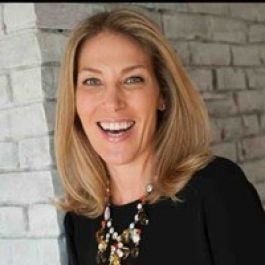Churn is not a negative reflection of a team. And it’s certainly not a negative reflection of an individual.
Bob Wamness, director of customer success at LeanIX, hopes CSMs are able to internalize this fact. That said, he knows it doesn’t erase the account problem many tech companies are currently facing as the economy continues to dip.
With that reality in mind, the following companies are restructuring teams, offering financial relief to certain clients and encouraging ongoing internal dialogues to address at-risk accounts in the name of reducing churn.
At Thought Industries, for example, CSMs have been doubling down on what has worked best for each customer. Vice President of Operations Therese Kelleher said she recommends refraining from introducing new bells and whistles into the mix. As tempting as trying all options might be, such features may deplete essential company resources and confuse contacts.
The state of business — and the world — might be ever-evolving, but these professionals said to stay the course.
Tips For Customer Success Managers to Reduce Churn
- Understand your customer's business goals
- Set clear expectations
- Use both successes and failures as learning opportunities
- Build your customer relationships on mutual trust
- Always be empathetic and understanding

Thought Industries
Therese Kelleher
VICE PRESIDENT OF OPERATIONS

At Thought Industries, Kelleher said the team is all-in on customer experience services. They are helping their clients understand what features within the online learning platform are most valuable as priorities continue to shift. Kelleher said focusing on results-driven outcomes will help their clients improve stickiness with their own customers and continue to drive incremental value.
What steps and advice are you taking right now to help your customers reduce churn in their accounts?
Thought Industries has maintained a focus on how we’re partnering with our customers on both strategic accounts and customer outcomes management. We’ve accelerated our technical success and support the organization’s ability to make sure customers have the right resources at hand when they need them.
Additionally, we continue to partner with our customers proactively to understand their business challenges. How can they further leverage the investment they have made in the platform to see better business results?
Once we learned how COVID-19 would have a material impact on society, we went through our entire book of business and identified clients most at risk for a negative impact and those in a good position for growth. We then discussed how we would support both sides of that spectrum.
To help our customers reduce churn in their accounts, we’re looking at their business models and their use cases. We’re providing consultative recommendations on which features will drive the best outcomes for their strategy. We’re also sharing strategies to keep their learners engaged. For example, clients can leverage learner paths within our platform to recommend which courses their customers should take and in what sequence.
"Thought Industries has split its focus into two segments: a client strategy and an outcomes conversation.’’
How have you adapted your customer success strategy in recent weeks, and what impact has that had on your conversations with clients?
Thought Industries has split its focus into two segments: a client strategy and an outcomes conversation. We have removed all technical triage, training and feature enablement from the client-facing customer experience team so they can focus on providing more strategic customer value.
We increased tech success and support staffing to provide on-call technical solutions as well as weekly office hours with a customer-centric focus. We are taking our time to tailor our responses to each client and consult internal subject matter experts. This forum also fosters a community where users can hear from their peers.
What’s the most important lesson you’ve learned when it comes to reducing churn?
Understand your customers’ business goals. Make sure you assign the right talent to the right customer and align outcomes with use cases. Only recommend features that enable their success. Ensure deep adoption on purchased features before introducing new ones. We’ve made resources with defined roles and responsibilities available to our customers at any given time. Additionally, we’re proactively talking with our customers about the health of their businesses.
My overall philosophy is “customer first, platform second.” Focus on connecting the customer to the platform. We also understand that every single person is under stressors we often aren’t aware of. So listen and show empathy.
Cybereason
Jean Lethuillier
GLOBAL SENIOR DIRECTOR OF CUSTOMER SUCCESS

At Cybereason, Jean Lethuillier, a global director of customer success, said leadership gave the global team discussion points and talk tracks for customers impacted by COVID-19. According to the global senior director of customer success, it’s part of the security company’s customer-focused strategy as a result of the pandemic. Lethuillier said the team is also highlighting their product’s adaptability in current circumstances.
What steps are you taking right now to help reduce churn in your accounts?
We took both proactive and reactive approaches to ensure we stayed customer-centric and situation-aware. This has been critical in helping us save accounts that are impacted by COVID-19 or were previously at risk and even attract new business.
Proactively, we offered complimentary services during the first few weeks of the pandemic to help our customers with business contingency. We reached out to customers in impacted industries to have one-on-one conversations around their plans, pains, concerns and foreseeable challenges. We are currently working with our CFO to plan out where we can provide extensions or financial relief based on COVID-19 impact by region, industry and customer size.
Reactively, once we understood the impacts of COVID-19 on some of our customers, either through inbound or outbound outreach, we worked to find the best way to keep them protected while ensuring both sides were financially secure.
How have you adapted your customer success strategy in recent weeks, and what impact has that had on your conversations with clients?
We are avoiding targeting both prospects and customers. We’re tailoring our communication, offerings and initiatives to our customers alone. This strategy has led to an increase in cross-departmental engagement in customer success. In other words, everyone from the back end to the front end is now a part of the customer success strategy. For example, we’re providing all employees with resources for how to identify and prevent business threats.
"Customer loyalty is key to turning renewals and upsells into milestone events.’’
What’s the most important lesson you've learned when it comes to reducing churn?
I’ve been reminded of the fact that customer loyalty is key to turning renewals and upsells into milestone events. There will always be hiccups along the way: product issues, gaps, poor customer interactions. It’s how a company reacts to these downfalls that showcases how much we actually care about our customers. Cybereason’s consistent value realization has translated into customer loyalty. This loyalty has been magnified during COVID-19.
Wamness
Bob Wamness
DIRECTOR OF CUSTOMER SUCCESS

Wamness wants to make one thing clear: all companies encounter churn. But with a customer-centric philosophy and partnerships built on constructive dialogues, Wamness said the IT architecture business has been able to anticipate potential risks and plan accordingly.
What steps are you taking right now to help reduce churn in your accounts?
Churn prevention is a staple for how customer success teams are measured year over year. To do so successfully, you need to be proactive in your planning but flexible in your delivery.
As the threat of COVID-19 elevated, the LeanIX team made a short list of customers we felt would be most impacted. To compile this assessment, we didn’t rely on industry impact or product statistics alone. Because our customer success teams partner with our customers throughout their entire lifecycle, we were able to measure success in terms of business outcomes rather than metrics.
Following our planning cycle, we focused on flexible delivery models based on LeanIX core concepts. We knew customers may have a unique need during this unprecedented time.
How have you adapted your customer success strategy in recent weeks, and what impact has that had on your conversations with clients?
There have not been any significant changes to our customer success strategy. We pride ourselves on being a valued partner to our customers –– not just an enabler of our technology.
As a trusted advisor, our dialogue focuses on driving the business forward and measuring outcomes. Our customer success team chaperones our customers throughout their journey with LeanIX.
Based on the types of conversations we had before the pandemic, our customers lean on us even more. We’re seeing asks to accelerate the timelines for decision-making from business continuity planning to budgetary optimization. As a result, our customers are requesting more time with the broader customer success team for guidance and recommendations on the best path forward.
"All companies encounter churn.’’
What’s the most important lesson you’ve learned when it comes to reducing churn?
All companies encounter churn. Customer success teams first need to understand that churn is not a negative reflection upon you as a person or as a team. Today, the main cause of churn is COVID-19’s impact on global operations.
Churn is OK. Your customer success team should discuss risks with peers and management. If you’re blindsided by churn, your organization is either not having the appropriate discussions regarding your customers or not having those interactions with your customer directly on a consistent basis. A regular cadence of internal and external customer-centric discussions will help you to identify churn risks early.
At LeanIX, we frequently communicate to share stories of both success and failure. This dialogue prompts constructive conversations on what works well, lessons learned and issues to be aware of. Learning from our past experiences sets the baseline for detecting at-risk customers.
Edify
Andrew Larty
SENIOR CLIENT OPERATIONS MANAGER

What steps are you taking right now to help reduce churn in your accounts, in light of what’s happening with the coronavirus?
At Edify, we’ve taken this opportunity to show our customers how much we truly care about them and appreciate their business. We understand that our customers are having to react to the situation created by the coronavirus in ways that are totally unprecedented, which is creating a lot of undue stress. A great example of this is the sudden mobilization of entire contact centers to a work-from-home model. This sudden shift is not an easy feat for businesses that weren’t prepared to be set up this way.
Our technology is built to deliver this crucial flexibility and fully enable enterprises to send their entire workforce home without disruption. As a result, we are dedicating all available resources to make that transition for companies as seamless as possible. Whether it’s assigning a project manager to help a customer with coordinating the details of the work-from-home transition or creating change management collateral to help agents organize their new workspace, we’re supporting our customers in any way we can.
How have you adapted your customer success strategy in recent weeks, and what impact has that had on your conversations with clients?
As Edify, employees were asked to work from home early on. We’ve really encouraged our customer-facing teams to not only over-communicate with their customers, but also to also be mindful of their messaging. We’ve asked our customer success teams to touch base with customers to discuss the health of their accounts and to see what new features are on the horizon. CSMs also check in on customers to see how they are doing as humans. We all quickly realized that working remotely can be both isolating and stressful, and any genuine human contact is a welcome change from the ‘new normal’ right now.
"CSMs also check in on customers to see how they are doing as humans.”
What’s the most important lesson you’ve learned when it comes to reducing churn? Why has this lesson been so important to you?
Customers typically don’t churn just because a product didn’t do X or Y. Customers churn because you’ve failed to build a relationship with the people in them. In the past, I can remember struggling to truly comprehend a customer’s business and the exact problems they were trying to solve. This was an important lesson because it revealed that customers can have a pretty high pain tolerance and they aren’t leaving because of the ticket they submitted to support six months ago. They’re ultimately leaving because we didn’t do a good enough job of understanding why they do business in the first place. There is an opportunity every time we onboard a client to position ourselves as an extension of their own team and endeavor to really understand their goals and our role in helping them win.
CB Insights
Micalla Hootstein
STRATEGIC ACCOUNT MANAGER

Hootstein said she looks for low user engagement during customer onboarding as an indicator for churn risk at CB Insights. If there is low engagement, Hootstein looks to analytical tools to consider their usage situation and reviews client goals. From there, she reaches out to the client with custom-tailored data queries and offers one-on-one workshops in order for clients to optimize their experience.
What are some proactive steps you take to help reduce churn in your accounts?
I take a very proactive and personalized approach when managing my book of business, with the goal of understanding customer needs and overcoming obstacles early. Staying well-organized, well-informed and having a thorough understanding of my portfolio helps me mitigate churn risk. This means knowing the ins and outs of my clients' contract terms, working with internal and external stakeholders to map accounts and providing value to my clients on a regular basis — not just when customers present churn risks or a renewal is approaching.
Some of the ways I try to add value to my clients include providing them with relevant data and research on disruptive technology trends in their industries, presenting them with tailored recommendations on how to best leverage CB Insights to accomplish their goals, being available to discuss their needs and answer any questions or concerns they may have.
At CB Insights, we have powerful internal analytics tools that help paint a comprehensive picture of our customers’ engagement habits. This helps both CSMs and SAMs be proactive, as we can make real-time data-driven decisions to help our customers. I rely heavily on these tools in my daily work, and I look for and analyze usage patterns to help uncover opportunities, as well as gaps, within my accounts that might be an indication of future churn.
What are some of the early warning signs you look for that indicate an account needs more support?
Lack of usage or engagement with our product at any point in the relationship, but especially at the onset, is a key indicator that an account may need more support. It is critical to see early product adoption within our user base. If an individual or team is slow to adopt the product, it can be an indicator of low usage or churn risk down the road. So, when I see low usage trends early on, I rely on a few different methods to understand and improve it. I’ll often start by reviewing the various internal usage analytics tools I have available to paint a picture of the usage situation. I'll also revisit my detailed notes from past calls with the team to identify what their goals and initiatives are.
Then, I’ll proactively send CB Insights research or custom-tailored data queries to my clients. The key is to be as specific and targeted as possible to show that I fully understand my clients' objectives and can provide helpful data and information to make them more effective and efficient in their roles. I also try to reconnect with disengaged users by setting up one-on-one working sessions, where I will offer personalized support on a particular client project or assignment. I also hold product roadmap review calls to give clients a glimpse into the various tools and capabilities CB Insights is building, which often gets clients very excited about what’s next. I find these different customer engagement strategies to be effective in preventing churn and maintaining high client satisfaction.
"I have found that being accessible, communicative and a trusted client partner has helped me reduce churn within my portfolio.”
What’s the most important lesson you’ve learned when it comes to reducing churn?
Building relationships with clients based on mutual trust, utilizing CB Insights’ resources, internal cross-collaboration and unwavering persistence have helped me reduce churn and excel in my role. Early in my career, I learned the importance of building and maintaining strong relationships, and I have carried this philosophy and lesson with me into my day-to-day work. I believe that having a strong partnership with clients is one of the main keys to success, and this is something I personally strive to achieve with mine.
I have found that being accessible, communicative and a trusted client partner has helped me reduce churn within my portfolio. I speak or meet with as many individual users as possible to understand how I can help with their individual and specific needs. Doing this has helped form relationships based on trust. Collectively, my portfolio is diverse and no two clients are alike. Therefore, I aim to learn about each client and their respective goals and needs in order for me to provide the most personalized, consultative approach and advice as possible.
Another important lesson I have learned, as cliché as it may sound, is to never give up. A key responsibility in an account management role is turning around difficult and unexpected situations which, ideally, eventually results in positive outcomes for your client, for your company and for yourself. Working hard, thinking creatively and critically and being relentless in reaching your goals are lessons that have allowed me to turn many challenging and complex relationships into successful, productive ones.
AB Tasty
Alexandre Anquetil
CUSTOMER SUCCESS MANAGER

For Anquetil, relations with customers are only as good as the expertise he and his team can provide. Instead of giving customers exactly what they want he encourages sharing open feedback about project experience and collaborating on goals to better that experience for the customer and their business.
What steps are you taking right now to help reduce churn in your accounts?
The AB Tasty platform permits users to quickly modify the content on their websites, which makes it very convenient for quick messaging. The first few weeks of the crisis were about helping our clients communicate about COVID-19 emergency measures and service evolutions: changes in stores’ opening hours, delivery options, return policies, etc. We also proactively contact businesses that are impacted the most.
There is a long series of actions that we do differently at the moment. It could be summed up by saying that we try to do what we usually do, but better. We allocate all of our resources to be as responsive as possible, help our users make the best decisions and shorten our deadlines.
"Almost every success or failure I experienced as a CSM confirmed that client satisfaction is not about saying ‘yes’ to everything.”
How have you adapted your customer success strategy in recent weeks, and what impact has that had on your conversations with clients?
The consequences of COVID-19 on our clients’ activities are pretty simple to assess; they woke up one day with a whole lot of new problems, and the decisions they have to make right now will have an impact on the short and long term. We did not really change our strategy, but we powered it up by improving our internal and external communication. Some companies are struggling, some have unexpected peaks of activity and others benefit from what seems to be deeper changes in consumers’ behaviors. We need to gain agility and show that we are able to tailor our offers.
It was essential to take quick actions when the COVID-19 period began. But the difference may lie in the ability to stay one step ahead and show our clients we understand that their business priorities suddenly changed and that it may happen again. This approach seems to be well received so far. In addition to proving the added value of our service to prevent early contract terminations, we already secured several renewals that could have been endangered.
What’s the most important lesson you’ve learned when it comes to reducing churn?
Almost every success or failure I experienced as a CSM confirmed that client satisfaction is not about saying “yes” to everything. At the end of the day, the relationship with our clients is based on the expertise we deliver. The value of this service only comes if we share open feedback about projects. If we deviate from this principle, we put time and resources at risk to be allocated to non-valuable tasks.
In difficult times, the best practices do not necessarily change. Many customers reach out to us and ask for the “quick wins” and “low-hanging fruit” to generate revenue and maximize ROI. It seems that most of the things businesses are hoping to do right now are the things they should be doing already. This learning is important to me because it validates the value of AB Tasty for our users and shows that we are going in the right direction, no matter the circumstances.
Yotpo
Ryan DeAngelo
MANAGER OF CLIENT SUCCESS
DeAngelo said it’s important to form long-term relationships with clients during the onboarding process, not just during contract renewal negotiations. Even if clients have positive results, they might not be open to renewal if they felt neglected. DeAngelo said he focuses on listening to the challenges of his clients and building actionable plans to help them utilize Yotpo’s platform.
What are some proactive steps you take to help reduce churn in your accounts? How have these habits been effective?
In light of what is happening across the globe, it’s important for client success (regardless of the industry) to be super understanding with their clients. A lot of our brands are going through challenging times. We have to lean on the relationships we’ve built and then focus on continuing that long-term partnership with our brands, as opposed to short-term wins. If that means foregoing an opportunity for account expansion, so be it. It’s much more critical for churn to make sure we can help our brands get through this difficult period of time with Yotpo as a partner, rather than putting them in an even tougher spot. Showing empathy with our clients goes a long way toward our churn numbers.
What are some of the early warning signs you look for that indicate an account needs more support?
I, along with the whole client success team at Yotpo, have put a focus on listening such as hearing the challenges our clients are facing and putting together an actionable plan to utilize our platform in the ways that make the most sense based on those challenges. This has led to very open conversations with our brands and phenomenal learnings on our side.
"Showing empathy with our clients goes a long way toward our churn numbers.”
What’s the most important lesson you’ve learned when it comes to reducing churn?
The most important lesson I’ve learned about churn is it's all about expectation setting and relationship building from day one. If you don't set the stage properly from the first touchpoint or call with a new client and begin forming goals toward a long-term relationship with them, you can find yourself in a very tough spot come a renewal of their contract.
Even if a client saw incredible results in year one, if they don’t have trust with their CSM the renewal conversation becomes a battle, rather than a smooth transition into year two. A lot of CSMs will focus extra hard on their accounts closer to the end of their contract and provide less care to their newer accounts, but it’s imperative to show dedication and attention to your newest clients, as it will pay dividends toward your churn numbers later down the road.

Snapdocs
What steps are you taking right now to help reduce churn in your accounts, in light of what’s happening with the coronavirus?
We’re fortunate right now to be in a position where our product helps our customers manage the impact of COVID-19 in a meaningful way, which means that we’re not seeing churn as a major risk. Our focus for the last few months has really been centered around removing roadblocks so customers can get up and running with Snapdocs. We’ve been working to make the onboarding process faster and easier for everyone involved.
How have you adapted your customer success strategy in recent weeks, and what impact has that had on your conversations with clients?
Our clients are mortgage lenders, many of whom are adapting to remote workforces and investing in new digital processes for the first time. Our product enables folks to close loans in a more digital way. But the complex environment of lenders, settlement agents, mortgage investors and local (sometimes at the county level) regulations changes by the hour.
Our customer success team sits in the middle of all of these parties. We can share learnings that we see across our broader customer base in real time to accelerate digital initiatives for our clients.
"If we want to be successful, that means we have to make our customers successful.’’
What’s the most important lesson you’ve learned when it comes to reducing churn?
Our clients are human beings with a job to do. If we want to be successful, that means we have to make our customers successful. And the best way to do that is by treating each customer like a human being, understanding their pain points, empathizing with their unique set of circumstances and working together to help them get their job done faster, easier or more economically. Not only does this approach reduce churn, it allows us to celebrate with our customers when they exceed expectations.




